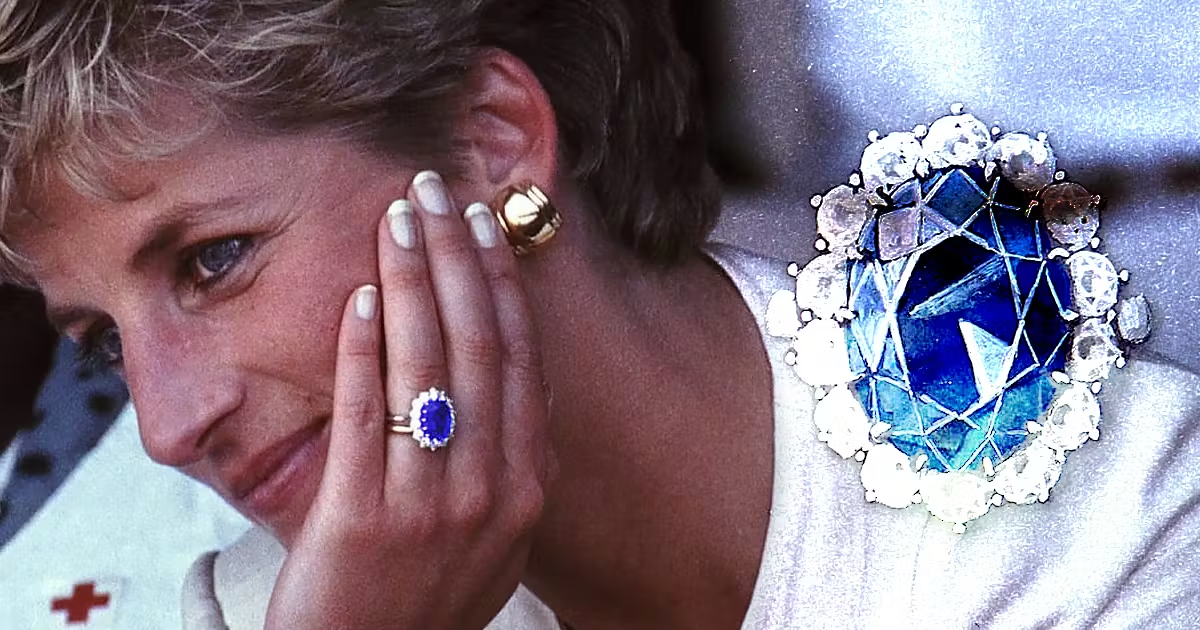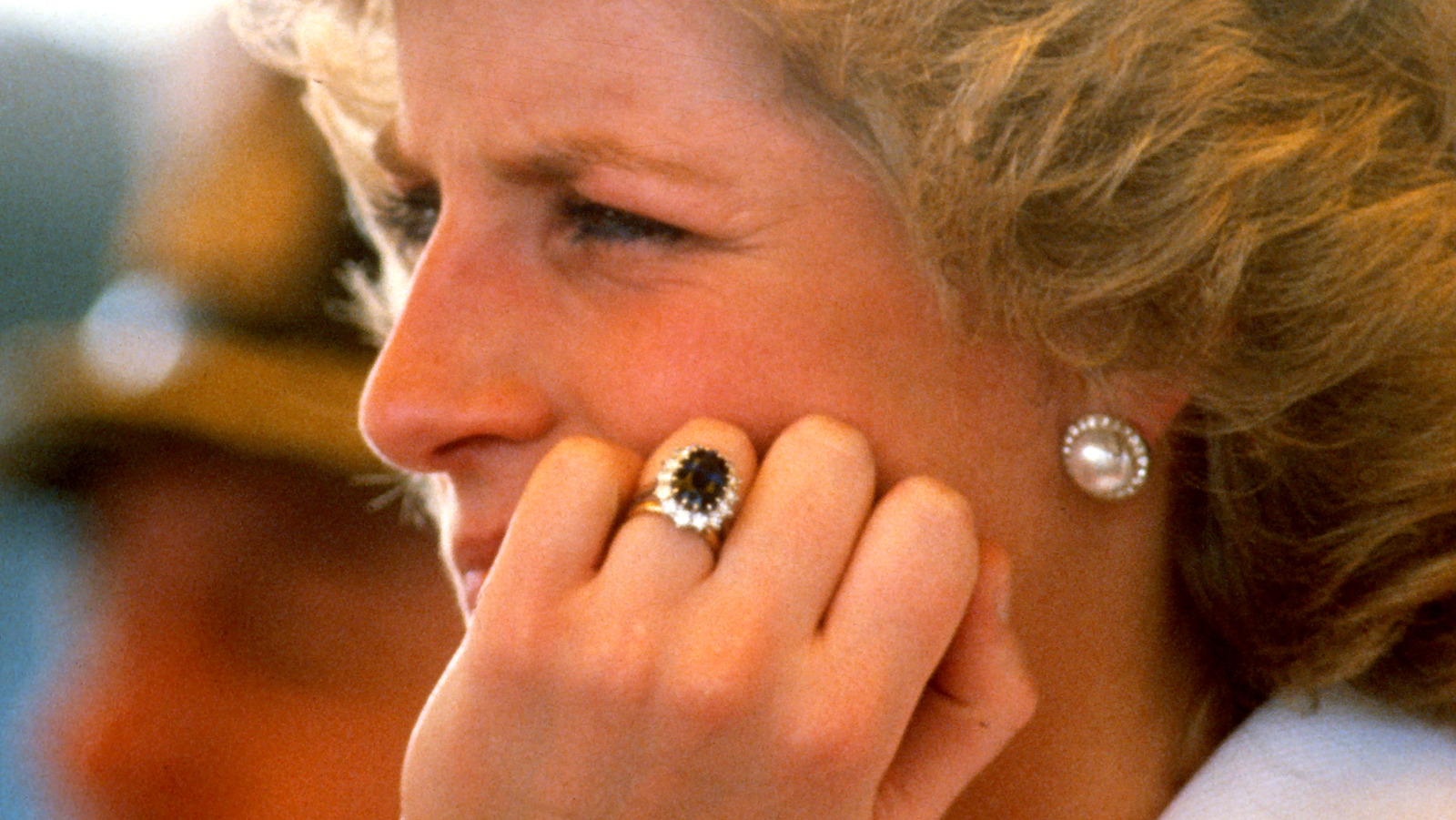When Princess Diana walked down the aisle in 1981, the world was captivated by the stunning sapphire and diamond ring that became an enduring symbol of love and royalty. The iconic piece of jewelry, often referred to as "Diana's Ring," continues to inspire millions of couples worldwide. This remarkable ring not only represents the romance of one of the most famous royal weddings in history but also reflects the timeless elegance and craftsmanship of British jewelry design.
Princess Diana's ring has become a cultural icon, symbolizing both the personal and public aspects of the late Princess of Wales' life. Its design, history, and legacy have made it one of the most famous engagement rings in the world. From its origins to its influence on modern jewelry trends, Diana's ring remains a subject of fascination for jewelry enthusiasts and royal watchers alike.
In this article, we will explore the fascinating story behind Diana's ring, including its origins, design, and cultural significance. We will also delve into how this iconic piece of jewelry has influenced modern engagement ring trends and continues to inspire couples around the globe. Whether you're a fan of royal history or simply appreciate beautiful jewelry, this article will provide valuable insights into the enduring allure of Diana's ring.
Read also:Josh Hutcherson Girlfriend
Table of Contents
- Origins of Diana's Ring
- The Design of Diana's Ring
- Symbolism and Meaning Behind the Ring
- The Popularity of Diana's Ring
- Modern Influence on Engagement Rings
- Biography of Princess Diana
- The Heritage of the Ring
- The Price and Value of Diana's Ring
- Replicas and Inspirations
- Conclusion
Origins of Diana's Ring
Princess Diana's engagement ring was crafted by the prestigious British jewelry house Garrard, which has been creating jewelry for the British royal family since 1735. The ring was selected by Prince Charles from Garrard's pre-existing collection, making it a semi-custom piece. This decision sparked debate at the time, as many believed that an engagement ring should be uniquely designed for the recipient. However, the ring's beauty and timeless appeal quickly overshadowed any criticism.
The origins of Diana's ring can be traced back to the 1970s, when Garrard introduced the "Trinity" collection, featuring rings with central sapphires surrounded by diamonds. The specific design chosen for Diana featured a 12-carat blue Ceylon sapphire surrounded by 14 solitaire diamonds, all set in 18-karat white gold. This combination of sapphire and diamond became a hallmark of the ring's design, setting it apart from other engagement rings of the era.
Historical Context
At the time of Princess Diana's engagement in 1981, the world was captivated by the romance between the young couple. The media frenzy surrounding the royal wedding ensured that every detail of the event, including the engagement ring, was scrutinized and celebrated. Diana's ring quickly became a symbol of the couple's love and commitment, as well as a reflection of the era's fascination with luxury and tradition.
The Design of Diana's Ring
The design of Diana's ring is both classic and distinctive, featuring a large central sapphire flanked by diamonds in a cluster setting. The sapphire, a deep blue Ceylon variety, is considered one of the finest examples of its kind. The diamond accents enhance the ring's brilliance, creating a harmonious balance between the blue sapphire and the sparkling diamonds. This combination of colors and materials has made the ring a timeless piece of jewelry that continues to inspire modern designs.
While some critics initially described the ring as "too bold" or "too traditional," its enduring popularity has proven that its design transcends fleeting trends. The ring's versatility allows it to be appreciated by generations of jewelry enthusiasts, from those who favor classic styles to those who appreciate contemporary interpretations of traditional designs.
Key Features
- Central 12-carat blue Ceylon sapphire
- 14 solitaire diamonds surrounding the sapphire
- 18-karat white gold setting
Symbolism and Meaning Behind the Ring
For many, Diana's ring symbolizes more than just a romantic gesture; it represents the intersection of love, tradition, and modernity. The sapphire, often associated with royalty and nobility, carries deep cultural significance. In many cultures, blue sapphires are believed to represent wisdom, loyalty, and truth, making them a fitting choice for an engagement ring. The inclusion of diamonds, which symbolize strength and eternity, adds another layer of meaning to the ring's design.
Read also:Metallica Instagram
Beyond its symbolic value, Diana's ring also reflects the personal tastes and preferences of the late Princess of Wales. Known for her elegance and grace, Diana chose to wear the ring with pride, further cementing its place in history as one of the most iconic pieces of jewelry in the world.
Cultural Significance
The cultural impact of Diana's ring cannot be overstated. It became a global phenomenon, influencing countless couples to choose sapphire and diamond rings for their own engagements. The ring's popularity also helped to revive interest in sapphire engagement rings, which had been overshadowed by the dominance of diamond solitaires in the mid-20th century.
The Popularity of Diana's Ring
From the moment it was unveiled in 1981, Diana's ring captured the imagination of millions of people around the world. Its unique design and association with one of the most beloved royals in history made it an instant classic. The ring's popularity soared even higher when Kate Middleton, the Duchess of Cambridge, wore it as her engagement ring in 2010, further solidifying its status as a timeless piece of jewelry.
According to a survey conducted by a leading jewelry retailer, sapphire engagement rings experienced a 40% increase in sales following Kate Middleton's engagement. This trend demonstrates the enduring influence of Diana's ring on modern jewelry preferences. Many couples today choose sapphire rings as a nod to the legacy of Princess Diana and her iconic engagement ring.
Statistics on Sapphire Engagement Rings
- 40% increase in sapphire engagement ring sales after Kate Middleton's engagement
- 70% of millennial couples prefer unique engagement rings over traditional diamond solitaires
- 60% of jewelry buyers consider historical significance when choosing an engagement ring
Modern Influence on Engagement Rings
Diana's ring has had a profound impact on modern engagement ring trends. Today, many couples opt for rings that feature colored gemstones, such as sapphires, emeralds, or rubies, as a way to express their individuality and creativity. The popularity of cluster settings, which incorporate multiple gemstones into a single design, can also be traced back to the influence of Diana's ring.
Furthermore, the resurgence of vintage and antique rings can be attributed to the lasting appeal of Diana's ring. Many modern designers draw inspiration from the classic styles of the past, incorporating elements of Art Deco, Victorian, and Edwardian design into their creations. This trend reflects a growing appreciation for timeless elegance and craftsmanship in the world of jewelry.
Top Trends in Modern Engagement Rings
- Colored gemstones as center stones
- Vintage-inspired designs
- Cluster settings with multiple gemstones
Biography of Princess Diana
Princess Diana, born Diana Frances Spencer on July 1, 1961, was a member of one of Britain's most distinguished aristocratic families. She married Prince Charles, heir to the British throne, on July 29, 1981, in a wedding watched by millions of people worldwide. Diana quickly became a global icon, renowned for her compassion, grace, and dedication to charitable causes.
Below is a summary of Princess Diana's biodata:
| Full Name | Diana Frances Spencer |
|---|---|
| Birthdate | July 1, 1961 |
| Place of Birth | Sandringham, Norfolk, England |
| Marriage Date | July 29, 1981 |
| Children | Prince William and Prince Harry |
Legacy of Princess Diana
Princess Diana's legacy extends far beyond her role as a royal figure. She was a devoted mother, a tireless advocate for humanitarian causes, and a style icon whose influence continues to be felt today. Her commitment to raising awareness about issues such as AIDS, landmines, and homelessness has inspired countless individuals and organizations to make a difference in the world.
The Heritage of the Ring
As a piece of jewelry with deep historical significance, Diana's ring holds a special place in the annals of royal history. Passed down to Kate Middleton, the Duchess of Cambridge, the ring continues to be a symbol of love, tradition, and continuity within the British royal family. Its journey from Princess Diana to Kate Middleton highlights the importance of family heirlooms in preserving the legacy of past generations.
The ring's heritage also reflects the evolving role of women in the royal family. While Princess Diana's life was marked by both triumphs and challenges, her enduring influence on the monarchy and society at large cannot be denied. Through her choice of engagement ring, she left a lasting impression on the world that continues to resonate with people of all ages and backgrounds.
Preservation of Royal Heirlooms
The preservation of royal heirlooms, such as Diana's ring, is a testament to the importance of tradition and history in maintaining the identity of the British monarchy. These items serve as reminders of the past while also inspiring future generations to uphold the values and traditions that define the royal family.
The Price and Value of Diana's Ring
While the exact price of Diana's ring has never been disclosed, estimates suggest that it is worth several million dollars today. The ring's value is derived not only from its rare and high-quality materials but also from its historical and cultural significance. As one of the most famous engagement rings in the world, Diana's ring is considered priceless by many jewelry experts and collectors.
In addition to its monetary value, the ring's sentimental value cannot be quantified. For millions of people around the world, Diana's ring represents the enduring power of love and the importance of cherishing cherished memories. Its association with two of the most beloved figures in modern history ensures that its value will continue to grow over time.
Factors Influencing the Ring's Value
- Rarity of the 12-carat blue Ceylon sapphire
- Historical significance as a royal engagement ring
- Cultural impact on modern jewelry trends
Replicas and Inspirations
Due to its widespread popularity, Diana's ring has inspired countless replicas and variations. Many jewelry designers have created their own interpretations of the iconic design, offering affordable alternatives to those who wish to own a piece of history. These replicas range from mass-produced imitations to handcrafted, high-quality reproductions that capture the essence of the original ring.
For those seeking a truly unique piece, custom-designed rings inspired by Diana's ring are also available. These rings allow couples to incorporate elements of the original design while adding their own personal touches, creating a one-of-a-kind engagement ring that reflects their individual style and preferences.
Choosing the Right Replica
When selecting a replica of Diana's ring, it's important to consider factors such as quality, craftsmanship, and authenticity. Look for reputable jewelers who specialize in creating high-quality replicas that closely resemble the original. Additionally, consider the materials used in the replica, as this can significantly impact its appearance and durability.
Conclusion
In conclusion, Diana's ring remains one of the most iconic pieces of jewelry in the world, symbolizing love, tradition, and elegance. Its origins, design, and cultural significance have made it a timeless piece that continues to inspire couples and jewelry enthusiasts alike. From its association with Princess Diana to its modern influence on engagement ring trends, this remarkable ring has left an indelible mark on history.
We


:max_bytes(150000):strip_icc()/GettyImages-539585436-7716d28571cf470f81a075e7be14f24a.jpg)